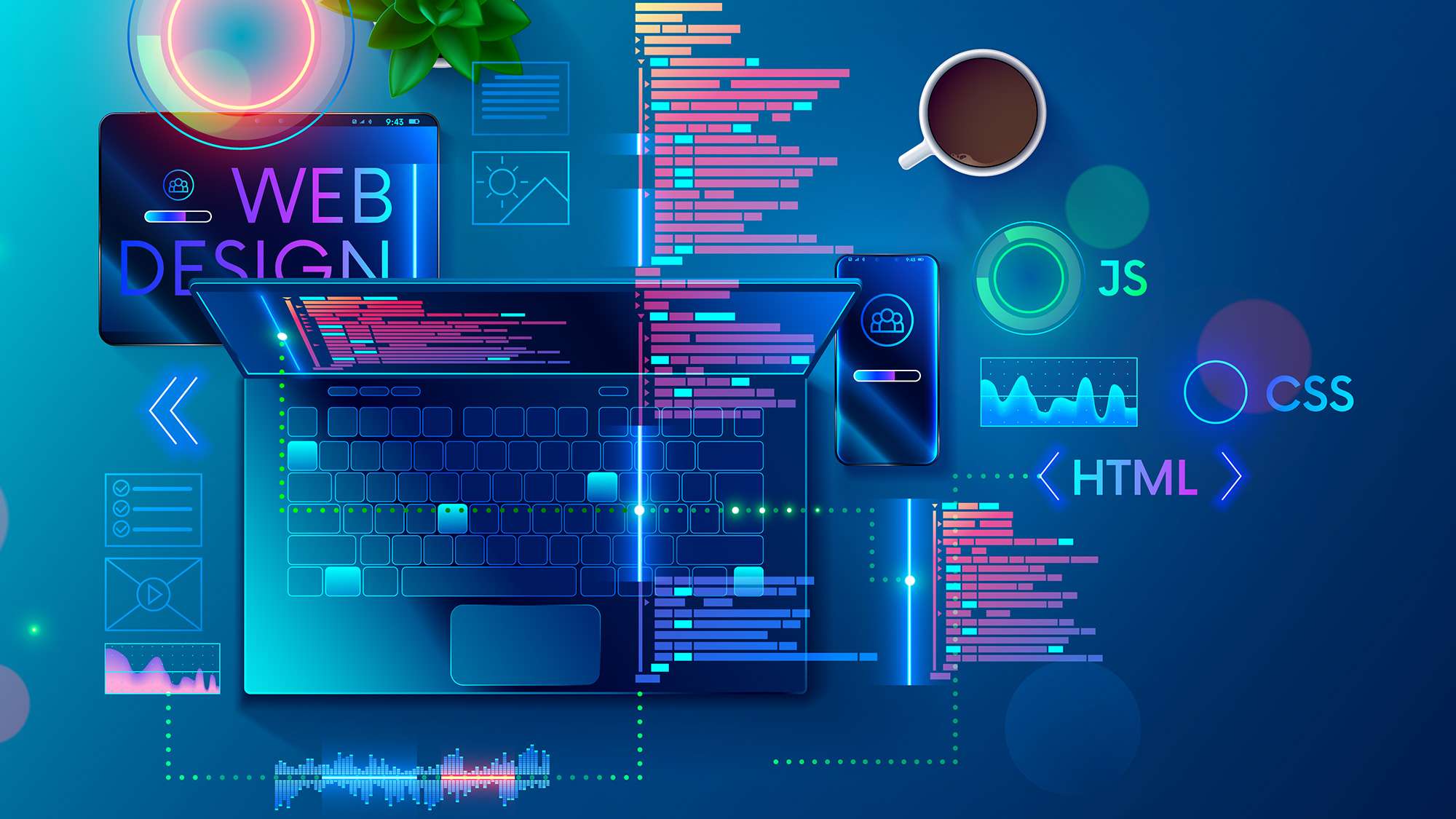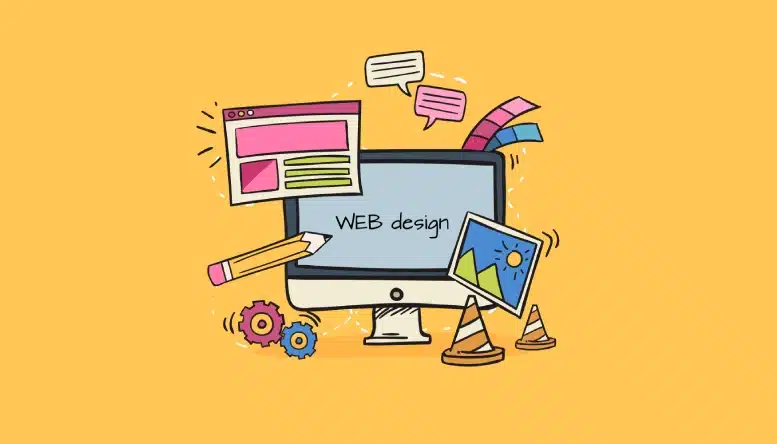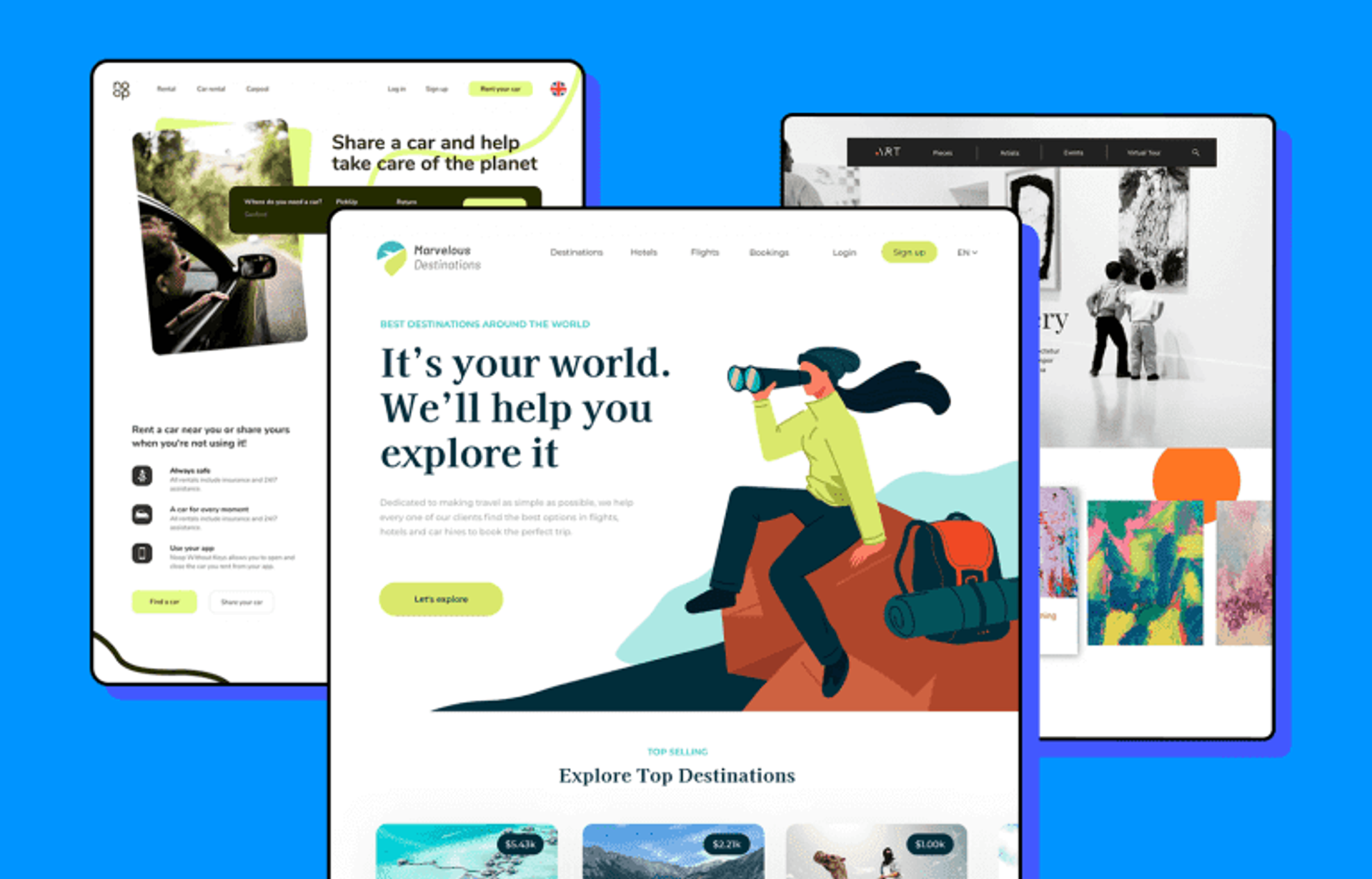Las Vegas SEO for Businesses Looking to Dominate Search Engine Results
Creative Internet Layout Solutions for Modern and Engaging Sites
In the realm of web layout, the pursuit of modern-day and engaging services has become significantly vital for companies aiming to record individual attention. By integrating bold shade plans, interactive elements, and responsive formats, developers can create experiences that not only resonate with individuals yet additionally boost brand name identification.
Accepting Bold Color Design
In internet layout, the critical use strong color design can considerably enhance individual involvement and brand name identity. By employing dynamic tones, designers can produce visually striking sites that record interest and foster a remarkable experience. An appropriate shade combination not just shows a business's worths however also stimulates details feelings that can affect customer habits.
Bold shades can be utilized to guide users' interest to essential elements such as phone call to activity, enhancing conversion prices. Utilizing contrasting colors for buttons and web links can make these elements stand out, prompting users to connect more easily. A cohesive color system throughout the website enhances brand name acknowledgment, developing a feeling of familiarity and trust amongst site visitors.
However, it is essential to stabilize bold colors with ample white room to prevent frustrating customers. Reliable use of typography additionally enhances bold shades, making certain readability while keeping aesthetic charm. Inevitably, accepting strong color pattern in internet layout not just boosts visual top quality but also plays an important role in attaining critical service purposes, making it a crucial factor to consider for contemporary web advancement.

Using Interactive Components
Interactive components are important in modern website design, as they considerably improve user engagement and create a more dynamic surfing experience. By incorporating attributes such as computer animations, hover effects, and clickable elements, sites can encourage customers to check out web content much more extensively and return for future gos to.

Micro-interactions, such as refined computer animations when a switch is clicked or a form is sent, can also improve the customer experience by providing prompt responses. These tiny details can make the internet site feel more responsive and alive, cultivating a sense of link in between individuals and the site.
Moreover, gamification components, such as rewards for finishing details actions, can inspire users to involve with the web content more deeply. By thoughtfully incorporating these interactive components, web developers can develop a memorable and interesting on the internet experience that reverberates with users and urges them to return.
Implementing Receptive Layout
Applying responsive design is essential in today's multi-device landscape, making certain that web sites supply an ideal viewing experience throughout numerous screen dimensions. As individuals increasingly access the web with smart devices, tablet computers, and desktops, a one-size-fits-all technique is no much longer viable. Responsive style enables smooth navigation and communication, adjusting design and web content to fit the tool being used.
Key principles of responsive style consist of liquid grids, flexible photos, and media inquiries. Fluid grids make use of loved one systems, such as percents, instead of repaired pixels, allowing elements to resize proportionately. Adaptable pictures range within their consisting of elements, protecting against overflow and maintaining visual stability. Media inquiries promote the application of various styles based on the gadget's characteristics, such as width, height, or resolution, allowing developers to tailor the user experience successfully.
Moreover, responsive style enhances search engine optimization performance, as search engines prefer mobile-friendly websites. By implementing receptive layout, services not just enhance user satisfaction and involvement yet likewise enhance their reach in an affordable electronic landscape. As technology useful site proceeds to evolve, adopting receptive design has actually ended up being a fundamental method for any modern-day and appealing website.
Incorporating Multimedia Web Content
Multimedia material plays an essential duty in producing interesting and vibrant web experiences that record customers' attention and improve understanding. By combining text, photos, sound, and video, internet sites can provide a richer story that attract numerous finding out designs and choices. This integration not just boosts customer engagement but additionally help in communicating complex concepts succinctly.
Including top quality images and infographics can separate textual web content, making it more absorbable. Similarly, video clip tutorials and discussions can provide navigate to this site extensive insights that fixed content may not fully connect. Audio components, such as podcasts or history songs, can also enhance the environment of an internet site, producing an extra immersive experience.
In addition, the strategic use multimedia can boost search engine optimization performance, as internet search engine favor diverse web content types, enhancing exposure. However, it is crucial to guarantee that multimedia elements do not impede page tons times, as this can bring about user aggravation. Click This Link By stabilizing multimedia integration with performance considerations, internet designers can create aesthetically appealing and functional sites that resonate with individuals, fostering a much deeper connection and motivating return brows through.
Prioritizing Customer Experience

To accomplish an ideal individual experience, designers need to focus on several essential concepts. Responsive design is essential; sites must adjust seamlessly to various devices and display sizes. This accessibility guarantees that individuals can involve with content no matter their picked system. Quality in format and power structure is vital. Clear phone call to activity, readable typography, and organized material overview individuals, minimizing cognitive tons.
In addition, integrating customer responses into the layout procedure is invaluable. Routine screening with real users helps identify discomfort factors and areas for improvement, enabling iterative enhancements. Ultimately, focusing on UX not just elevates user complete satisfaction yet also drives involvement and conversion rates, making it a crucial element of modern-day web layout techniques. By placing individuals at the center of style efforts, websites can develop long lasting, favorable impacts that urge return visits.
Conclusion
In conclusion, modern web layout remedies that stress vibrant shade plans, interactive aspects, responsive design, and multimedia content significantly enhance customer involvement and contentment. las vegas seo. Prioritizing user experience through clear formats and continual comments even more contributes to boosted conversion prices.